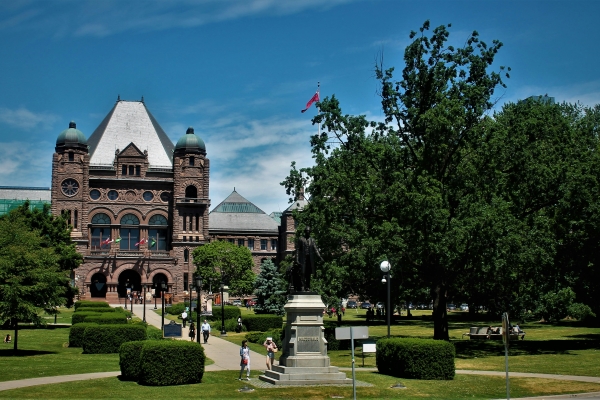In this issue of Urban Link, we explore the relationship between urban anchor institutions—in particular higher education institutions— and innovation. First, Penn IUR Co-Director Eugenie Birch writes about the links between urban universities, research and development (R&D), and innovation. This topic is important for a number of reasons chief among them is the changing climate for research funding for universities and its impact on cities, especially those like Philadelphia where the annual infusion of research funding ($939 million in 2015) helps support Penn’s 37,000 person labor force. (For a broad picture of the University’s impact on economic development, see Penn’s just-released FY2015 Economic Impact Report.) Second, Laurie Actman, Chief Operating Officer at the Penn Center for Innovation, discusses the culture of innovation at Penn in particular, and recent initiatives that have spurred innovation at the University and in the city of Philadelphia more broadly.
From Science Parks to Innovation Districts: Understanding the Trajectory of R&D in Northeast Universities
By Eugenie Birch
Birch is Co-Director of Penn IUR and Nussdorf Professor of Urban Research at the University of Pennsylvania. This article is adapted from Birch’s recent white paper: From Science Parks to Innovation Districts: Research Facility Development in Legacy Cities on the Northeast Corridor.
Research and development (R&D) drives advanced economies worldwide. It provides the foundation for the new knowledge, products, and processes that, in turn, become new industries, create jobs and serve as the source of economic growth. Key areas for R&D are in what is called the knowledge and technology industries (KTI) that consist of high technology manufacturing (e.g. aircraft, spacecraft, pharmaceuticals) and knowledge-intensive services (commercial business, financial and communication services).
In terms of expenditures and numbers of employees, the private sector dominates the R&D enterprise, but the university sector, largely funded by the U.S. government, is also an important component both directly and indirectly. It leads in direct basic research often partnering with the private sector. And the presence of a strong research university is often a deciding factor for research-intensive corporations making regional location decisions dependent on having an educated workforce.
Additionally, with regard to local economic development, these universities have become increasingly important to their host cities. Anchored by their real estate holdings, missions and histories, they are also large, stable employers. They serve as a new kind of “factory” whose product is new, often patentable, knowledge paid for with external (federal) funds.
More recently, they have begun serving as sources of invention and re-invention as they meet their spatial needs for laboratories on and off campus. Their building programs, again largely financed by federal research funding, or donor support garnered to attract more federal funding, are often directed to expanding the campus footprint, creating separate technology parks or innovation districts, or adapting former industrial space.
At one time, university-sponsored technology parks were important innovations. Developed to capture inexpensive, outlying or suburban land for university- and private-sector research, they tended to be single use and auto-dependent. Eighty-five are in existence today. Recently, more universities are fostering a new brand of development, the innovation district. Located in cities, featuring walkability and containing a mix of land uses including space for living, working, and recreation, the sponsors of these districts design them to attract highly valued knowledge workers and students. In fact, some landlords of suburban technology parks are “urbanizing” their holdings, adding housing, restaurants and other amenities.
With a focus on a Legacy City’s efforts to find ways to soften its rough transition from an industrially based economy to one that takes advantage of its own “eds and meds,” and the region’s key industries, especially pharmaceuticals and shale oil/gas, Philadelphia offers a case study in efforts to re-imagine and re-structure obsolete industrial areas. The University of Pennsylvania has undertaken multi-decade work to take advantage of the growth in federal research funding.
Finally, in surveying four other highly active research universities, it is clear that each is accommodating the demand for research space and that each is finding strongly contextual solutions, often in partnership with their localities, each with a slightly different twist. For example, Harvard and Johns Hopkins are concentrating on community-building AND research space expansion while Columbia and Cornell/Technion are experimenting with encouraging stronger ties between university–based research and their business communities.
All in all, R&D brings significant funding to institutions – private-sector entities and universities – in urban areas. While the traditional arrangements are in transition – as both types of institutions evolve their respective individual and collective roles in basic and applied research, the emerging efforts in the Northeast Corridor appear to be From Science Parks to Innovation Districts— redefining, regenerating and refueling the economies of former declining neighborhoods and industrial areas in Legacy Cities. While many unknowns remain, it is essential to monitor the phenomena in the years to come because as the Penn case illustrates, university-led urban revitalization is a slow process.
University-Led Innovation: How Penn and other Urban Universities are Using Innovation to Improve their Cities
By Laurie Actman
Actman is the Chief Operating Officer at the Penn Center for Innovation.
This is an exciting time for urban universities. A new focus on innovation and entrepreneurship is driving engagement in hands-on research and real-world problem solving.
In cities across the country, urban universities are seeing innovation as a way to undertake research that drives growth and change. By creating corporate alliances, new venture practices and programs, seed fund programs, and virtual and on-site incubators, universities are directly engaging with entrepreneurs in fields as diverse as medicine, design, economics and education.
With private-sector partnerships, universities have the opportunity to translate research into the real world with a speed that has not been the hallmark of academic research.Penn is in the midst of its own efforts to promote and drive university-led innovation. At Penn, there is a new emphasis on building a culture that is supportive of innovation, thanks in great part to support from Penn’s leadership. Today, Penn is fostering innovation through a variety of strategies including:
- Expanding and re-inventing the traditional role for commercialization and tech transfer offices: Penn decided to reposition its tech transfer office (formerly called the Center for Technology Transfer) into the Penn Center for Innovation (PCI) so that it can serve as a one stop shop for fostering partnerships with the private sector. The focus is on relationship building and strategic advice that transcends traditional licensing. We create start up companies, foster corporate alliances and seek to leverage Penn created discoveries into the market place in creative ways.
- Fostering a culture of innovation at the University: PCI launched a National Science Foundation funded ICorps program last year which serves as an on-campus accelerator to help faculty and students refine their ideas incorporating market feedback. We also launched numerous education programs on commercialization topics of interest both on and off campus and seek to be a thought leader and convener of the entrepreneurial community. This helps to build the ecosystem throughout Philadelphia that attracts investors, entrepreneurs and corporate partners.
- Leveraging a real estate asset to support innovation: Penn is developing the Pennovation Center which is a building adjacent to campus that will consist of co-working space and a wet lab incubator and is intended to serve as a landing pad for our start up companies, corporate partners, investors, faculty and students. By creating an environment where innovation and entrepreneurship can thrive Penn is truly facilitating the growth of the ecosystem in Philadelphia.
Moving forward, I anticipate that more urban universities will join this trend of supporting the start-up ecosystem through commercialization efforts and innovation. Universities have already made great strides in creating linkages with the innovation economy in recent years, but this relationship is still in its relative infancy. There is still much work to be done. The possibilities for future collaboration, innovation, and creation— both at Penn and elsewhere—have enormous possibility that can foster direct economic impacts via job creation, growth of companies in search of commercial space near Universities and more millennial workers remaining in cities for jobs and housing. This confluence of opportunity has the potential to make inroads into some of the stickiest problems faced by our cities, and our world.




